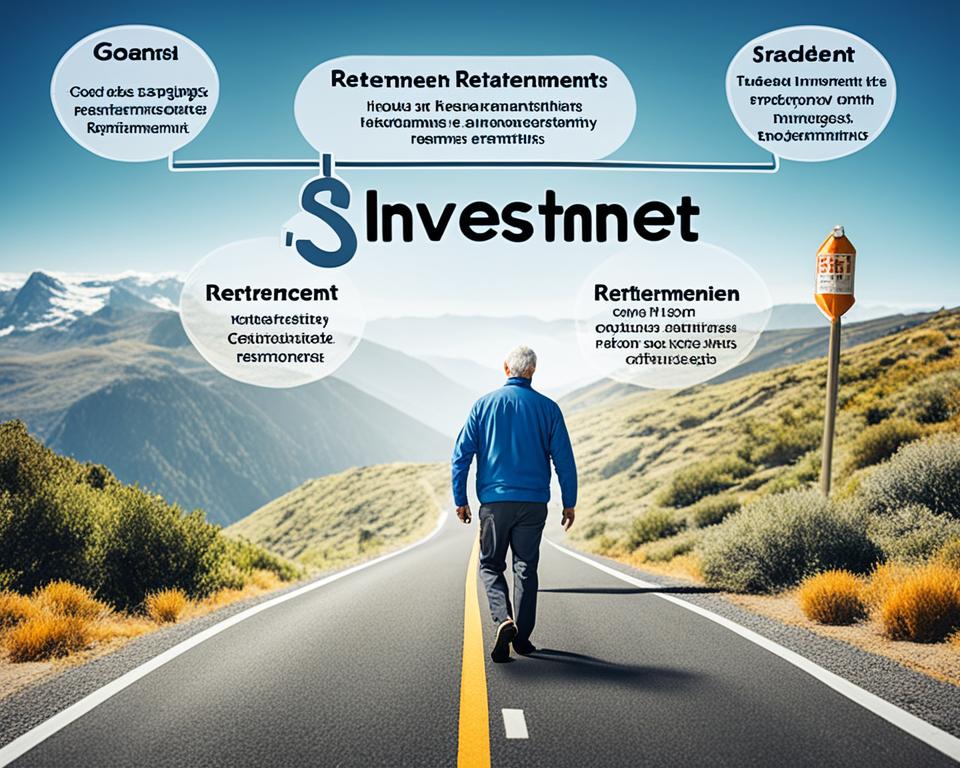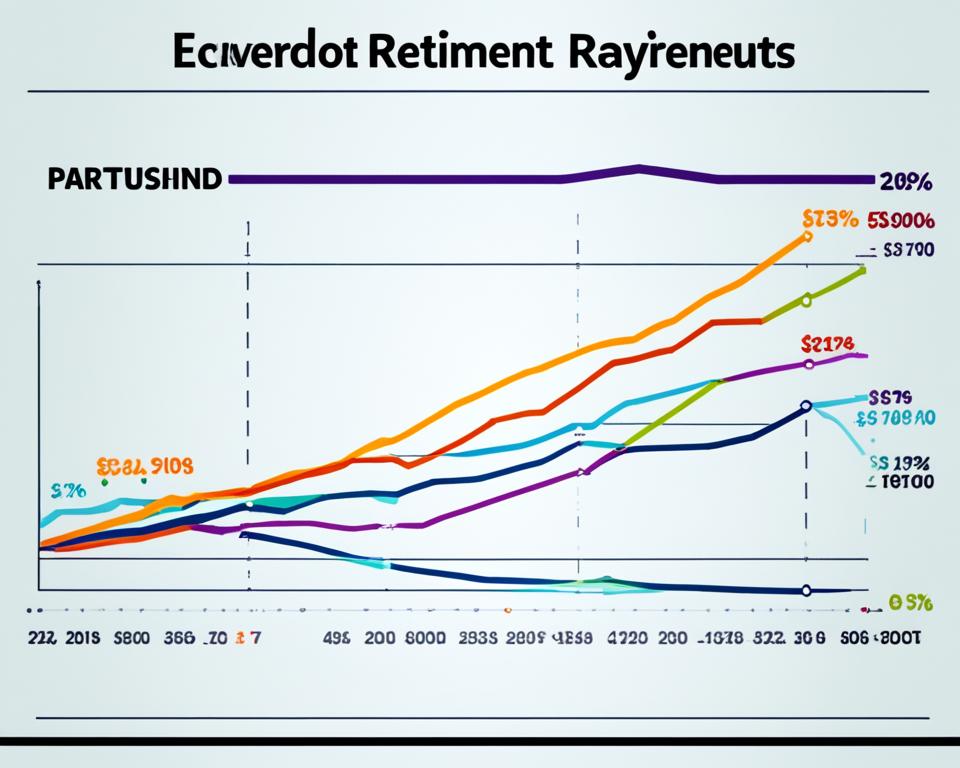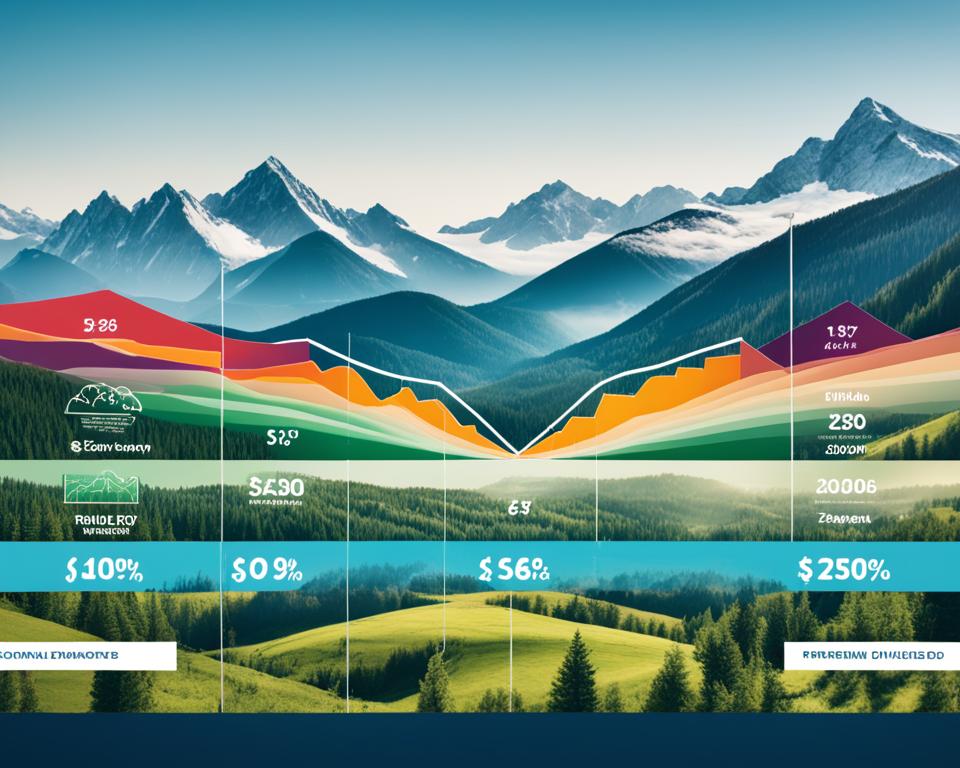Embarking on the stages of retirement planning is not merely a financial decision, it’s a leap into crafting your future. As you move through life’s seasons, from the vigor of your working years to the tranquility of retirement, it’s paramount to have a comprehensive retirement planning process. Whether you’re at the dawn of your career or eyeing the golden horizon, the right approach coupled with guidance from a skilled retirement financial advisor can make all the difference in achieving the retirement you envision.
Understanding the intricate tapestry of income sources, expenses, savings programs, and asset management is the crux of retirement planning. It’s about harmonizing your finances with the vibrant lifestyle you’ve dreamed of post-career. Remember, the goal isn’t solely to reach a number—it’s about ensuring that the journey there is just as rewarding as the destination itself.
So, take a moment. Visualize your perfect retirement. Let’s map out the path to get you there, with each step thoughtfully considered for maximum enjoyment and peace of mind. Think beyond the numbers, to the relationships, experiences, and legacy you hope to build. You’ve worked hard to earn your retirement; now it’s time to ensure it works hard for you.
Key Takeaways
- Initiate your retirement planning process as early as you can to cultivate a well-furnished future.
- Seek out a trustworthy retirement financial advisor to guide you through various investment avenues and strategies.
- Meticulously assess income, expenses, and savings to meet and exceed your retirement objectives.
- Take advantage of tax-advantaged retirement saving options like IRAs and 401(k)s to optimize your financial growth.
- Prepare for both the financial and lifestyle aspects of retirement, ensuring a tailor-made fit for your golden years.
- Revisit and reshape your retirement plan as life evolves, maintaining flexibility within your strategy.
- Understand retirement is a multifaceted journey that encompasses more than financial readiness; it includes defining a fulfilling post-work life.
Understanding the Retirement Planning Journey
Embarking on the retirement planning journey can appear daunting, but with a detailed roadmap and an understanding of your unique needs, it paves the way to a fulfilling future. The key to a comfortable retirement lies in establishing clear retirement goals, taking a methodical approach to your finances, and implementing effective retirement saving strategies. Let’s delve into how this process unfolds and how an early start can position you for success.
Defining Retirement Planning Goals and Needs
Your retirement aspirations are as individual as you are. They may include traveling the world, pursuing hobbies, or spending more time with loved ones. Whatever your retirement goals may be, quantifying them in financial terms is critical. A robust retirement readiness assessment can help determine how much you’ll need to fund your lifestyle. It factors in life expectancy, future healthcare costs, living expenses, and potential liabilities, transforming your dreams into actionable financial targets.
The Importance of Early Planning for a Secure Retirement
The sooner you start planning for retirement, the more time your money has to grow. Initiating early retirement saving strategies allows you to take advantage of compound interest and tax-deferred growth. For those under 50, contributing up to $22,500 in 2023 and $23,000 in 2024 to a 401(k) maximizes these benefits, setting a solid foundation for your future. Remember, proactive planning is not just about financial readiness; it’s about ensuring that you achieve the vibrant and satisfying retirement you deserve.
Assessing Your Retirement Readiness
As you chart your course on the retirement planning timeline, a fundamental step is determining just how prepared you are. Are your current financial trajectories and plans robust enough to hang your dreams on? Here, you will find insightful ways to measure your retirement readiness and ensure your golden years are as golden as they should be.
Conducting a Retirement Readiness Assessment
Preparation is paramount, and a retirement readiness assessment is an essential tool on your journey. This crucial step involves a comprehensive review of your current financial landscape, including your assets, ongoing income, anticipated retirement expenses, and any other retirement income sources you plan to tap into. The outcome? A personalized snapshot of where you stand and what adjustments you may need to comfortably retire.
Estimating Future Cash Flows and Necessary Savings
After assessing your current status comes the pivotal task of estimating future cash flows. You’ll want to evaluate all prospective income streams and weigh them against your expected expenses. This could include pensions, Social Security benefits, annuities, and returns from your retirement investment planning. Calculating these figures helps gauge whether your savings will align with your stated retirement goals, ultimately guiding your future saving and investment strategies.
Remember, assessing your retirement readiness isn’t a one-and-done deal; it’s a continuous part of your planning. Life changes, and so should your strategy. Frequent reviews ensure that you’re always on track towards a retirement that’s not just financially secure but truly fulfilling.
Developing Retirement Saving Strategies
Embarking on retirement planning, you’ll find that building a robust framework for your golden years is about more than just betting on one horse. It involves a spectrum of investment vehicles and savings approaches, each contributing to your overarching financial mosaic. By mastering these various strands, you will shape a retirement portfolio that not only stands the test of time but also works in conjunction with your lifestyle and retirement goals.
Understanding Employer-Sponsored Retirement Plans
As an integral part of your retirement saving strategies, employer-sponsored plans like 401(k)s and 403(b)s serve as a cornerstone for many Americans. These plans are particularly advantageous due to potential employer match programs, which can significantly bolster your retirement savings. In 2023, you can contribute up to $22,500 to these plans, a figure that rises to $23,000 in 2024. Plus, if you’re over 50, an additional catch-up contribution is permissible, allowing you to accelerate your savings as you approach retirement.
Exploring Individual Retirement Accounts (IRAs)
Diversity in savings is key, and Individual Retirement Accounts (IRAs) provide an excellent supplement to employer-sponsored plans. Traditional IRAs offer the benefit of pre-tax contributions, effectively reducing your taxable income for the year of contribution. On the flip side, Roth IRAs are funded with after-tax dollars, offering the sweet payoff of tax-free growth and withdrawals when you retire. Both accounts have their unique pros and cons, and choosing between them is a crucial step in fine-tuning your retirement readiness assessment.
Determining Your Personal Savings Rate
To ensure your retirement saving strategies align seamlessly with your retirement goals, you’ll require a personalized savings rate. This is the percentage of your income that you earmark for retirement each year. To arrive at this rate, you must consider various factors including your target retirement age, desired lifestyle, and the expected rate of return on your investments. By tailoring this rate to your circumstances, you can journey towards retirement with the confidence that your savings strategy is as unique and well-considered as your dreams for the future.
Charting a Course with Retirement Investment Planning
As you navigate the waters of your financial future, retirement investment planning is the compass that guides you. It’s not just about stowing away money in any harbor; it’s about selecting the right accounts, like a skilled captain chooses the best routes, to leverage tax advantages and secure higher returns. Catering to an array of retirement income sources is essential, and for the nuances of this task, a retirement financial advisor can be your first mate in decision-making.
Whether you’re early in your career or closer to casting off into retirement, you have an armada of investment vehicles at your disposal. Employer-sponsored plans like 401(k)s are akin to flagship investments, often providing an employer match—think of it as an extra sail to catch the wind behind your future financial security.
- Employer-Sponsored Plans: Maximize contributions to enjoy the employer match, which is essentially free money towards your retirement fund.
- Individual Retirement Accounts (IRAs): Tailor your investment strategy with a Traditional or Roth IRA, weighing tax benefits against future financial needs.
- Consulting with Advisors: Investing can be a complex endeavor; seeking advice from a retirement financial advisor can secure your course and avoid any unseen reefs.
With each investment choice, you’re plotting a course towards a destination that promises comfort and security in your retirement. Here’s a breakdown of different retirement accounts, illustrated in a table that compares their unique advantages to help you with your investment decisions:
| Retirement Account | Contribution Limits (2023/2024) | Tax Advantages | Employer Match |
|---|---|---|---|
| 401(k)/403(b) | $22,500 / $23,000 | Pre-tax contributions, Tax-deferred growth | Varies by employer |
| Traditional IRA | $6,500 / $7,000 | Pre-tax contributions, Tax-deferred growth | N/A |
| Roth IRA | $6,500 / $7,000 | After-tax contributions, Tax-free growth | N/A |
It can be overwhelming to weigh anchor and set sail into these financial seas. Keeping a keen eye on your goals and consulting regularly with your financial advisor ensures that you can adapt to changing tides and make informed decisions. By doing so, you will find peace on your voyage towards retirement with a diversified portfolio that addresses your specific needs and goals. Your dedication to retirement investment planning today marks the chart for untroubled seas tomorrow.
Identifying Your Retirement Income Sources
The journey towards a comfortable retirement is anchored in identifying and diversifying your retirement income sources. Beyond the bedrock of traditional savings, a holistic retirement planning process intertwines various streams of income to safeguard your financial future. Comprehending and cultivating a mix of income sources can be the keystone of your retirement saving strategies. Let’s explore the different channels that can contribute to your retirement treasury.
Employer-Sponsored Retirement Plans: These plans are a mainstay for many individuals. Includes 401(k)s and 403(b)s, which often feature employer match programs, magnifying your contributions. Take full advantage of these benefits where available, as they can significantly amplify your retirement savings pool.
Government Benefits: Social Security and other government-sponsored programs provide a foundational layer of income during your golden years. It’s essential to understand when to begin taking these benefits to optimize your lifetime income.
Traditional and Roth IRAs: Individual Retirement Accounts offer greater control over your investments and tax benefits. Whether it is tax-deferred growth with a Traditional IRA or tax-free withdrawals with a Roth IRA, these accounts are pivotal components in retirement financing.
Part-Time Work or Passive Income: Earned income doesn’t have to stop with retirement. Consulting, part-time jobs, or a side business can supplement your income, while passive income streams like rental properties or royalties can also contribute to your financial security.
Annuities or Pensions: If you have a pension or are considering purchasing an annuity, these can provide a reliable, fixed stream of income throughout retirement.
With these varied sources, your retirement saving strategies gain both strength and flexibility. Consider this comparative chart detailing common retirement income sources and their characteristics:
| Income Source | Description | Notes |
|---|---|---|
| 401(k)/403(b) Plans | Employer-sponsored, tax-deferred | Often includes employer match; subject to RMDs |
| Social Security Benefits | Government-issued, based on work history | Benefits optimized by delaying claiming |
| Traditional/Roth IRAs | Individual contributions, tax-advantaged | Traditional: tax-deferred, Roth: tax-free distributions |
| Part-Time Work | Income from post-retirement jobs | Adds flexibility and can extend retirement funds |
| Passive Income | Rentals, royalties, or business ventures | A source of income with minimal active effort |
| Annuities/Pensions | Fixed, regular payments | Provides predictable, stable income |
Keep in mind that a strategic blend of these sources is paramount for a resilient financial plan. Periodically reviewing and adjusting your portfolio can ensure that your retirement income remains robust against market fluctuations and life’s unpredictability. Navigate your retirement planning process with confidence, knowing each source plays a role in your overall retirement symphony.
Planning for Longevity: Ensuring Your Savings Last
As you approach retirement, the critical question on your mind is likely how to ensure your savings sustain your lifestyle for years to come. A successful retirement investment planning strategy takes into account not only the initial phase of stepping away from full-time work but also the decades that follow. This means that you must adeptly navigate through various financial junctures to maintain a comfortable standard of living. Key to this is the concept of balancing risk and reward, so that your investments continue to grow without exposing you to undue risk as you age.
Balancing Risk and Reward in Retirement Investments
When it comes to your retirement portfolio, balancing risk and reward is a delicate dance. In your younger years, you may have leaned towards more aggressive investments with higher potential returns. However, as retirement nears, shifting towards more conservative investments can protect against market volatility. Ensuring a mixture of stocks, bonds, and other assets tailored to your risk tolerance and time horizon is a sage approach. Yet, keeping a measure of growth-oriented investments in the mix can help safeguard your purchasing power against inflation over the long term.
Navigating Required Minimum Distributions and Withdrawal Strategies
One reality of retirement is navigating Required Minimum Distributions (RMDs). If you’ve invested in tax-deferred retirement accounts like IRAs, you’ll be required to begin taking RMDs at age 72. Not meeting these requirements can result in hefty penalties, making it crucial to have a clear understanding of withdrawal strategies. A blend of systematic withdrawals and annuities may be adopted to create a regular income stream while preserving your nest egg. It’s vital for you to consider these factors as a part of your broader retirement savings strategies, ensuring financial stability throughout your retirement years.
In conclusion, nurturing your retirement savings to withstand the test of time requires a harmonious blend of calculated risk management and strategic planning. Your planning should be a living process, one that embraces changes in both the market and your personal life, allowing you to adapt and thrive well into your golden years.
Stages of Retirement Planning
Embarking on the retirement planning timeline is akin to setting off on a grand voyage. You’ll traverse different terrains, each presenting unique challenges and opportunities. Careful navigation through each stage is vital to ensuring that your retirement experience aligns with the life you have imagined for yourself. Each phase of the journey, from early planning to achieving long-term stability, demands attention to detail and an understanding of the multifaceted nature of preparing for your post-work life.
At the outset, you are invited to participate in pre-retirement planning and preparation. This is where you lay the groundwork for the years ahead, conducting the all-important retirement readiness assessment. It’s the perfect time to dream big and outline the vibrant retirement lifestyle you’re aiming for, keeping in mind both the financial requirements and the enrichment of your overall well-being.
As you enter into full retirement, you are greeted by newfound financial freedom. The diligent work you put into your retirement investment planning starts to bear fruit, allowing you to soak up the joys of your well-earned leisure. However, this is no time to rest on your laurels—the planning continues to ensure your finances and lifestyle stay in sync.
It’s not uncommon to encounter a phase of disenchantment, where reality makes an unexpected turn against your initial expectations. Should this occur, it’s essential not to let it take the wind out of your sails, but rather to view it as a valuable checkpoint. This is an opportunity to reassess your course and make any necessary adjustments to your retirement blueprint.
The journey can take you through a process of reorientation—a thoughtful realignment of your goals and expectations with the aim to reclaim the excitement and promise of your retirement days. By reevaluating your plans and perhaps recalibrating your retirement readiness assessment, you can ensure that your strategy continues to reflect your aspirations and lifestyle desires.
In the final stage, reconciliation and stability emerge as the hallmarks of a job well done. At this juncture, retirees often discover a balanced and fulfilling lifestyle, one that reverberates with contentment and peace of mind. This tranquil stage is a testament to the precision and comprehensive nature of your earlier planning efforts.
While these stages lay out a general retirement planning timeline, remember that your journey is uniquely your own. Staying engaged and flexible, while also taking the time to conduct regular retirement readiness assessments, ensures you have the ability to smoothly sail from one stage to the next. Whether you’re charting your initial course or navigating through mid-voyage realignments, a holistic retirement investment planning approach will serve as your compass, guiding you towards a retirement filled with fulfillment and joy.
Finding Guidance: Working with a Retirement Financial Advisor
Embarking on your retirement planning process can often seem like navigating uncharted waters. With an array of decisions ranging from investment choices to tax planning, seeking expertise from a retirement financial advisor isn’t just a luxury—it’s a practical step towards ensuring your journey is as smooth as possible. A financial advisor becomes your lighthouse, offering guidance through the fog of financial complexities, illuminating the way forward. Let’s explore how choosing the right advisor is imperative to achieving your retirement goals.
Selecting the Right Advisor for Your Retirement Goals
Identifying a retirement financial advisor who resonates with your vision is the keystone to constructing a viable financial future. The ideal advisor will not only understand your present financial situation but also your aspirations for retirement. They should exhibit proficiency in crafting a retirement plan that caters to your specific needs and retirement goals. When selecting a professional, look for credentials, experience, and an approach to financial advising that aligns with your values. This partnership is an investment in your future—one that fosters a custom-tailored path to your retirement ambitions.
How a Financial Advisor Can Enhance Retirement Outcomes
A retirement financial advisor brings a wealth of knowledge to the table, significantly impacting the efficacy of your retirement planning process. From identifying lucrative investment strategies to optimizing your tax situation, their guidance is crucial. Advisors stay abreast of market trends and regulatory changes, allowing them to adjust your plan in real-time, keeping it resilient against life’s inevitable shifts. By laying a firm foundation and proactively managing your portfolio, they play a pivotal role in sculpting a retirement experience that is not only financially secure but exceedingly fulfilling.
FAQ
What are the key stages in the retirement planning process?
The retirement planning process typically includes the pre-retirement planning and preparation stage, transitioning to full retirement, experiencing and overcoming possible disenchantment, reorienting to new retirement realities, and finally reaching reconciliation and stability in your retirement lifestyle.
How do I define my retirement planning goals and needs?
To define your retirement planning goals and needs, you’ll want to consider your desired retirement age, lifestyle preferences, potential health care costs, life expectancy, and future financial obligations. It’s also important to assess your current financial situation, including income, assets, debts, and expenses, to create a clear and attainable retirement vision.
Why is early planning critical for a secure retirement?
Early planning is essential because it gives your investments more time to grow due to compounding interest. Starting early also allows you to take advantage of tax-deferred retirement accounts and potentially reduce your financial burden during your working years. Additionally, early planning increases the likelihood of meeting your retirement goals and provides more flexibility to adjust your plans if circumstances change.
What is a retirement readiness assessment?
A retirement readiness assessment is a thorough evaluation of your current financial situation, including income, expenses, debts, and savings. It measures your ability to achieve your retirement goals based on your current and projected financial resources, helping you understand how prepared you are for retirement and what steps you may need to take to improve your readiness.
How do I estimate future cash flows and necessary savings for retirement?
To estimate future cash flows and necessary savings, you’ll need to calculate your expected annual expenses in retirement, including basic living costs, health care, travel, and leisure. Then, subtract any guaranteed income sources like Social Security or pensions. The remaining amount is what you’ll need to generate from your savings and investments. Factor in inflation, potential investment returns, and life expectancy to determine the total savings required to cover your retirement expenses.
What should I know about employer-sponsored retirement plans?
Employer-sponsored retirement plans, like 401(k)s and 403(b)s, are powerful savings tools that often include employer matching contributions. These plans offer tax advantages and allow for automatic savings directly from your paycheck. It’s crucial to understand the contribution limits, investment options, and any vesting schedules associated with your particular plan.
Why should I explore Individual Retirement Accounts (IRAs)?
Individual Retirement Accounts (IRAs) offer additional retirement savings opportunities with tax advantages. Traditional IRAs allow for tax-deferred growth, while Roth IRAs offer tax-free growth and withdrawals in retirement. Understanding the contribution limits, income eligibility, and withdrawal rules for both Traditional and Roth IRAs can help you maximize your retirement savings strategy.
How do I determine the appropriate personal savings rate for retirement?
To determine your personal savings rate, start by setting a target retirement fund amount based on your expected retirement expenses and income needs. Then, work backward to figure out how much you need to save each year, taking into consideration your current age, expected retirement age, expected rate of return on your investments, and any existing retirement savings.
What are some key retirement investment planning considerations?
Retirement investment planning should take into account your risk tolerance, investment time horizon, and retirement goals. Diversifying your investment portfolio across different asset classes can help manage risk. Additionally, tax-advantaged accounts like IRAs and 401(k)s should be utilized to maximize your retirement savings potential. Consulting with a retirement financial advisor can help you develop a strategy that fits your unique situation.
How do I balance risk and reward in retirement investments?
Balancing risk and reward involves aligning your investment portfolio with your risk tolerance and retirement timeline. As you approach retirement, you may want to shift toward more conservative investments to protect your savings from market volatility. Throughout your investing years, regular portfolio reviews and adjustments can help maintain the appropriate balance between growth and safety.
What should I consider when navigating required minimum distributions and withdrawal strategies?
When navigating required minimum distributions (RMDs) and withdrawal strategies, consider the tax implications of your withdrawals and aim to minimize taxes paid over time. You should also plan withdrawal strategies to ensure your savings last throughout retirement, taking RMDs for traditional retirement accounts starting at age 72 into account. Coordinating your withdrawals with Social Security benefits and other income sources can also optimize your retirement finances.
How does a retirement financial advisor enhance retirement outcomes?
A retirement financial advisor can enhance retirement outcomes by providing expert advice on financial planning, investment strategies, and tax considerations. They can help you stay on track with your retirement goals, adjust your plan as needed, and provide you with peace of mind knowing that you have a professional guiding your financial decisions as you prepare for and live through retirement.
What should I look for when selecting the right advisor for my retirement goals?
When selecting a retirement financial advisor, look for someone with credentials and experience in retirement planning. They should have a clear understanding of your unique goals and financial situation, provide transparent fee structures, and offer unbiased advice that is in your best interest. You’ll also want to ensure they are easily accessible and communicate regularly about your retirement plan’s progress and changes in the financial landscape.












